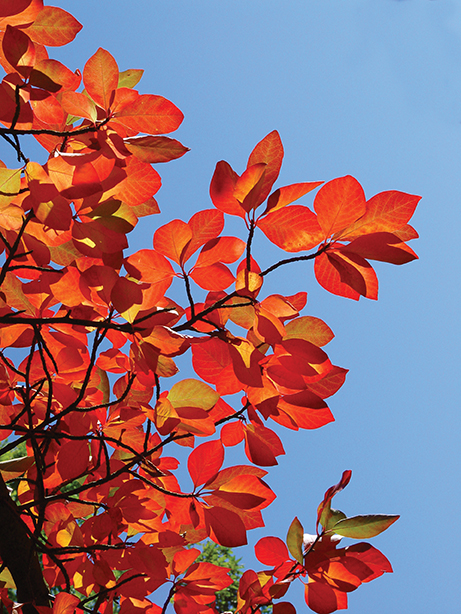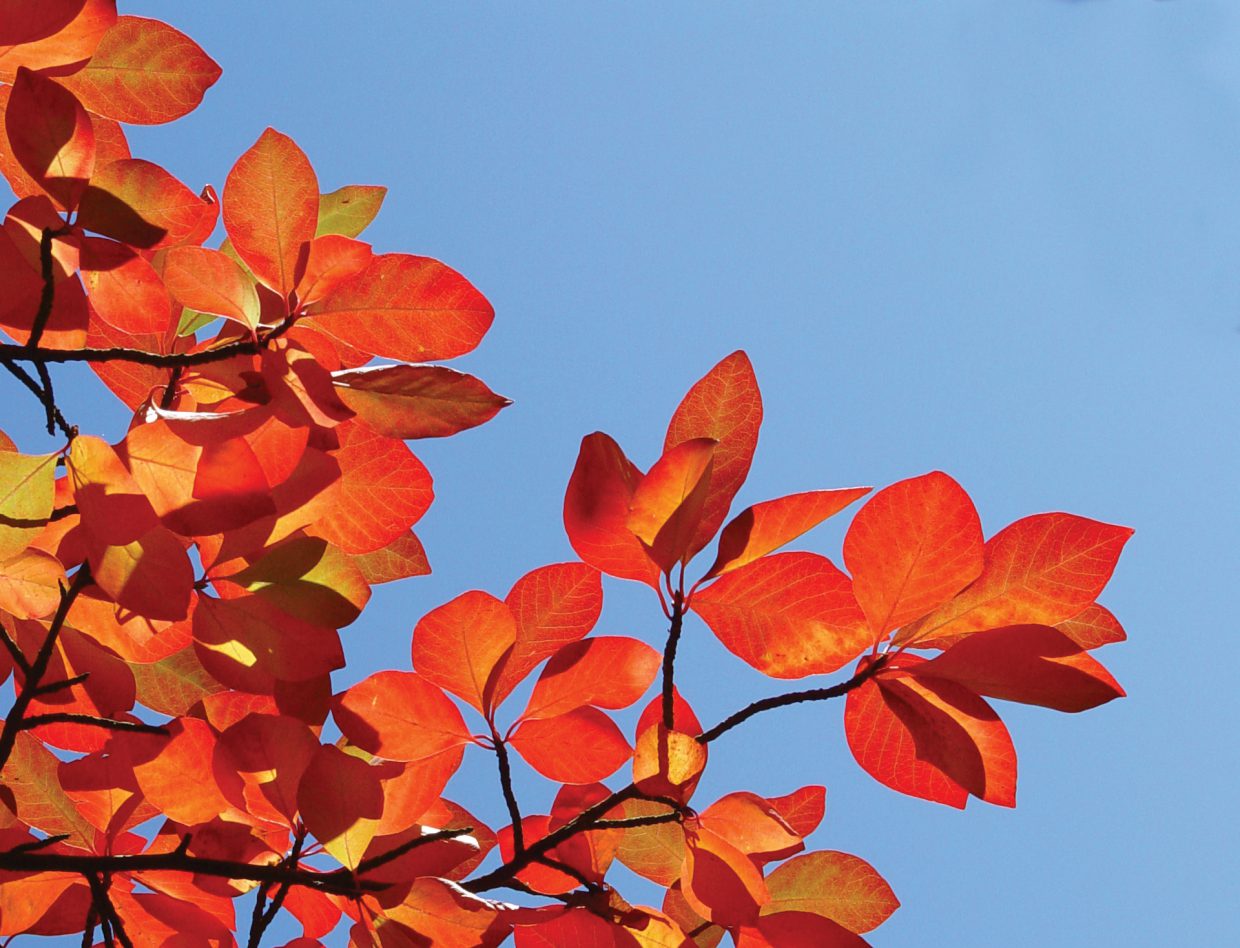My Forest Romance With Nyssa
A Fall Spectacular
By Paul Spitzer
Nyssa was a Greek nymph, and sylvatica means “of the forest.” So I will use feminine pronouns in this arboreal essay. (The tree is also known as “black gum” and “pepperidge.”) I have been a fan of Nyssa since my early osprey study days, 50 years ago. Osprey study is a tour of coastal habitats, where salt-tolerant Nyssa is common along exposed marsh and pond edges. To withstand high wind in violent storms, Nyssa sacrifices her top, and sometimes side branches. Out on exposed Gardiners Island, New York, these storm-topped trees were favored osprey nest sites. Climbing to these nests, I became a careful student of various tree species. I could trust red cedar branches long after they were dead and silver. Oaks too were generally reliable, at least when alive. But lovely Nyssa was a treacherous tree. Dead branches would crumble under my weight, and even living ones might suddenly give way.

Image Credit: Getty Images/gardendata.
Even so, Nyssa is a favorite of mine, especially in late summer and autumn, when she turns a rich red. Simultaneously, she produces small oblong blue fruits (drupes), favored by all manner of birds and mammals. To disperse these, she “flags” them with beautiful color. Not every tree bears the fruit; but inquisitive migratory birds will disperse the seeds in proper habitat during their search. The fruit can be available over a long autumn period. I remember a dawn visit to a lake in Lyme, at the very end of October. Migrant hermit thrushes, newly arrived from the north woods, were feeding on the fruit in colorful lakeside Nyssas.
During many visits to Old Lyme, I noted a line of three planted Nyssas along the street next to the Congregational Church. These were cultivated specimens, tall and straight in comparison to their wind-tossed coastal sisters. They were beautiful and bore fruit similar to the wild trees. However, on August 4, 2020, a tropical storm brought violent winds to our river valley. That afternoon, I watched one of these Nyssas gradually fall apart under the onslaught, because of its native protective genes. Part of it wound up lying across the power lines. My moral: Not every wild forest nymph belongs on cultivated Main Street. But lest I undersell Nyssa, I must tell you that forest-dwelling specimens in New Hampshire sometimes live to the extraordinary age of 600 years. This sounds more like a deity to me.
Paul Spitzer, PhD, lived in the Connecticut River valley during his formative years as a naturalist and ecologist. He began his Osprey–DDT research as a student at Wesleyan University. He continued his doctoral research on northeastern osprey population biology at Cornell. He has accomplished conservation biology projects worldwide. He is currently finishing a book about loons.

